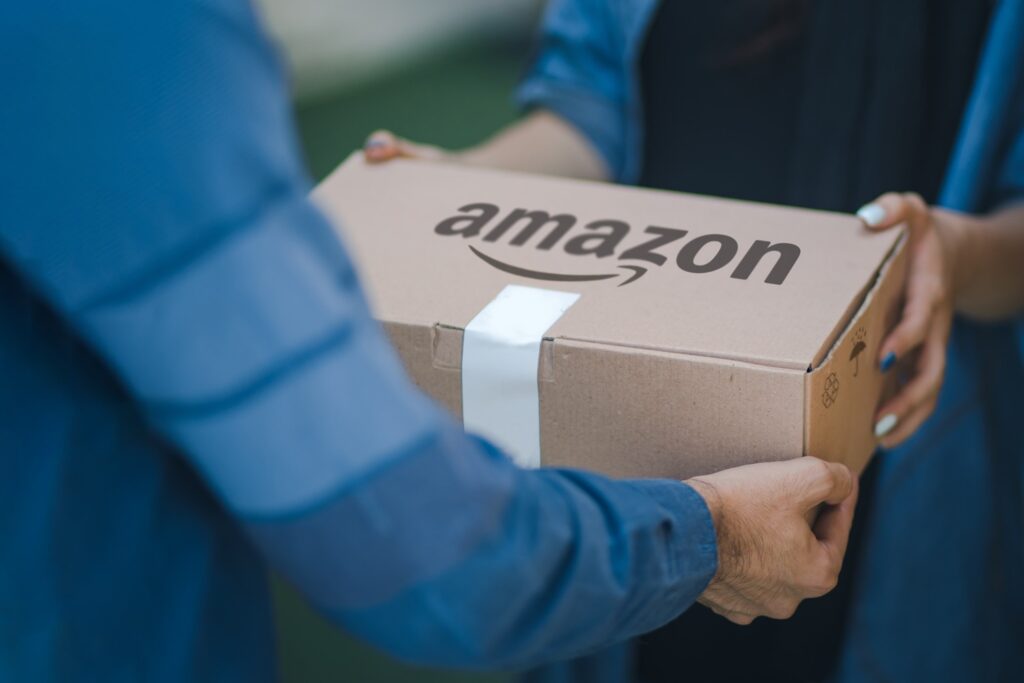Amazon FBA vs FBM: Which Is Right For Your Business?

Starting a business on Amazon is incredibly exciting. Listing your products can help you boost your business by making them more accessible to your target customers on the world’s largest online marketplace. But then comes the question of which fulfilment option you should follow.
This guide will give you everything you need to know about Fulfilment By Amazon (FBA) and Fulfilment By Merchant (FBM) options available to you as the seller. Understanding FBA vs FBM can help you drive your business forward and increase profits when you choose the best match for you.
What is Amazon FBA?
FBA is a service offered by Amazon that allows third-party sellers to outsource their order fulfilment and shipping operations to Amazon. With FBA, sellers can send their products to Amazon’s global fulfilment centres, where Amazon handles storage, picking, packing, shipping, and customer service.
This service is part of Amazon’s Supply Chain by Amazon and is designed to simplify the fulfilment process for sellers, allowing them to focus on other aspects of their business that will drive profits.
What is Amazon FBM?
On the other hand, Amazon FBM is where the seller is responsible for delivering products to customers who buy from them. With FBM, the seller handles all aspects of order fulfilment, including storage, packaging, shipping, and customer support. This means that the seller must manage their own inventory, shipping, and returns, which can provide more control over the fulfilment process but also require more resources and effort from the seller.

The key differences between Amazon FBA and FBM
Before you decide on whether Amazon FBA vs FBM is right for your business, sellers need to also understand the key aspects that differentiate these two options from one another. These are listed and unpacked below.
The cost of fulfilling orders
For FBA, Amazon charges a fulfilment fee for each unit shipped, including picking, packing, and shipping costs. This fee can be significant, especially for larger or heavier items. Amazon also charges a monthly storage fee for inventory stored in their warehouses under the FBA option. They often increase this fee during peak seasons which are typically between October and December given the holidays around that time.
Conversely, FBM sellers are responsible for all fulfilment costs, including storage, labour, product packaging, and shipping. This can include rent for storage space, equipment, and materials. Since FBM sellers manage their own inventory, they do not pay monthly storage fees to Amazon.
The amount of control you have over order fulfilment
When deciding between Amazon FBA vs FBM, you need to think about how much control you want over your online business. When you sign up for FBA, Amazon handles all aspects of order fulfilment, including storage, picking, packing, shipping, and customer service. There are also restrictions when it comes to branding for those sellers who choose FBA. Sellers have limited ability to customise packaging, shipping methods, and other aspects of the fulfilment process.
FBM gives sellers far more control over the whole fulfilment process, including taking charge of aspects like inventory management, packaging, and customer service. It also gives business owners far more control over who they use for shipping and delivery, so there’s far more flexibility when it comes to negotiating rates and building supplier relationships.
Eligibility for Amazon Prime
FBA products are automatically eligible for Amazon Prime, which includes free one-day shipping and other benefits. This can significantly increase sales and visibility for sellers. FBM differs in that these products are generally not eligible for Amazon Prime, which can limit their visibility and potentially reduce sales due to the large customer base that relies on Prime for fast shipping.
Involvement in customer service
Sellers can determine how customers experience the purchasing process, which may help develop the business’s reputation separate from Amazon when they choose FBM. When working with FBA, Amazon handles all customer queries and is in charge of the delivery experience. As Amazon manages these operations, sellers have less control over the customer’s experience.
Level of storage and inventory management
FBA sellers send their products to Amazon’s fulfilment centres, where Amazon manages inventory levels, storage, and replenishment. This streamlines inventory management for sellers but may lead to higher storage fees during peak seasons. FBA provides automated inventory tracking and reporting, making it easier for sellers to monitor stock levels and adjust their inventory accordingly.
FBM sellers are responsible for managing their own inventory, including storage, tracking, and replenishment. This provides greater control over inventory levels but requires more resources and effort from the seller. FBM sellers must, therefore, manually track inventory levels or use their own systems separate from Amazon’s.

The pros and cons of Amazon FBA
When given options of mechanisms you can choose to run your business, there are, naturally, pros and cons associated with each. When working with Amazon FBA, you should understand the following pros and cons of the fulfilment system:
Pros of FBA
Amazon Prime Customers
Using FBA makes you eligible to sell to Amazon Prime customers, who pay extra for fast and free shipping. This can significantly increase your sales. Prime customers are also more likely to purchase from sellers who offer Prime shipping, as it is a key benefit of their membership. By using FBA, you can tap into this large and loyal customer base, which can lead to higher sales and revenue for your business.
Buy Box and Higher Sales
FBA helps you win the Buy Box. This is a highlighted area on the product detail page of Amazon where buyers can instantly add an item to their cart. This increases your product visibility and makes it easier for buyers to purchase from you, leading to higher sales and more visibility for your products. Additionally, FBA ensures that Amazon has physical control over the inventory, which helps guarantee quality and quantity. This is a major factor in placement in the Buy Box.
Brand Trust and Convenience
FBA provides a clear signal to buyers that you have the backing of Amazon, ensuring a consistent and easy shopping experience. This builds trust with customers, as they know they can rely on Amazon for quality and service.
Cons of FBA:
Fees and Cost
FBA comes with various fees, including storage, packaging, shipping, and listing fees, which can cut into your profit margin if you’re not grossing enough each month. For example, fulfilment fees vary based on the size and weight of the product. The fees range from $3.22 to $4.37 per unit for standard-sized products. For oversized products, the fees range from $9.73 to $179.28 per unit, so this may be a pro or a con, depending on the nature of your products. There are also monthly inventory storage fees which range from $0.56 to $3.34 per cubic foot, depending on the season, size, and type of item.
Branding Limitations
Using FBA means that Amazon will put their branding on your products, limiting your ability to grow your brand and customise the shopping experience. For private label sellers, using FBA can affect their ability to grow their brand as Amazon’s branding takes precedence over theirs.
Lack of Control
FBA handles most of the shopping, shipping, and fulfilment processes, which can be a drawback for sellers who want more control over their operations. When using FBA, Amazon manages inventory levels, which can limit the seller’s control over stock levels and availability. Amazon also handles customer support, which can limit the seller’s direct interaction with customers and control over the customer experience.
For example, Amazon’s return policies can be strict, and sellers may have limited control over the return process, which can impact their ability to manage inventory and customer satisfaction.

The pros and cons of Amazon FBM
If you’re considering going with Amazon FBM instead, here are the main factors you need to consider before making the final decision.
Pros of FBM
More Control
FBM allows sellers full control over their inventory, packaging, and shipping operations, benefiting those who want to customise their customer experience and implement systems to scale with the business as it expands. FBM allows sellers to adapt to market trends and scale their operations as needed without being limited by Amazon’s fulfilment centre constraints.
No Amazon Fees:
FBM does not involve additional fees for storage, packaging, or shipping, which can help maintain profit margins. There are also no costs associated with product listings and advertising, customer service, or inventory management. The seller entirely monitors these costs. In this way, sellers are more in control of their profit margins and how they allocate their budgets when it comes to order fulfilment.
Branding Flexibility
FBM allows sellers to maintain their brand identity and customise the packaging and shipping experience to match their brand image. This allows sellers to differentiate their products from competitors and create a personalised brand experience for customers.
Cons of FBM
Increased Logistics Costs
Although sellers don’t have to pay Amazon fees, they will need to consider some other overheads when choosing FBM. FBM requires sellers to manage their own logistics, which can lead to increased storage, labour, and shipping costs. Sellers are also responsible for their own insurance and liability protection costs associated with shipping and handling products, such as cover for damage or loss during transit.
Time-Consuming
FBM requires sellers to handle inventory management, packaging, and shipping operations themselves, which can be time-consuming and may take away from other business tasks, especially for sellers with a large volume of products or fluctuating demand. Customer service also requires the attention of the seller, which can take up a lot of time and resources depending on the complexity of the query.
Risk of Errors
FBM increases the risk of errors in inventory management, packaging, and shipping, which can negatively impact customer satisfaction and reputation. This is because it may involve more manual processes, given the lack of automated systems usually provided by Amazon.

Amazon FBA vs FBM: Which should you choose?
The choice between FBA vs FBM depends on several factors, including your sales volume, product margins, and ability to handle fulfilment operations. Here’s a list of the things you should consider when deciding between Amazon FBA vs FBM:
- Product Size and Weight: Larger, heavier items or those with specific packaging requirements are more suitable for FBM, while smaller and lighter items are better suited for FBA.
- Sales Volume: High-volume sellers benefit from FBA’s efficiency and scalability, while lower-volume sellers may prefer FBM for greater control over fulfilment for a more personalised touch when trying to build brand identity.
- Profit Margins: Sellers with tight profit margins may prefer FBM to avoid additional FBA fees, while those with higher margins may benefit from FBA’s convenience and scalability.
- Access to Resources: Sellers with limited resources may prefer FBA for its hands-off approach, while those with more resources may prefer FBM for greater control over fulfilment.
Once you start thinking along these lines, you’ll soon determine which fulfilment option is right for you. After weighing up the pros and cons and thinking about the nature of your business and the products you sell, you can select the best option for your business to maximise profits.


